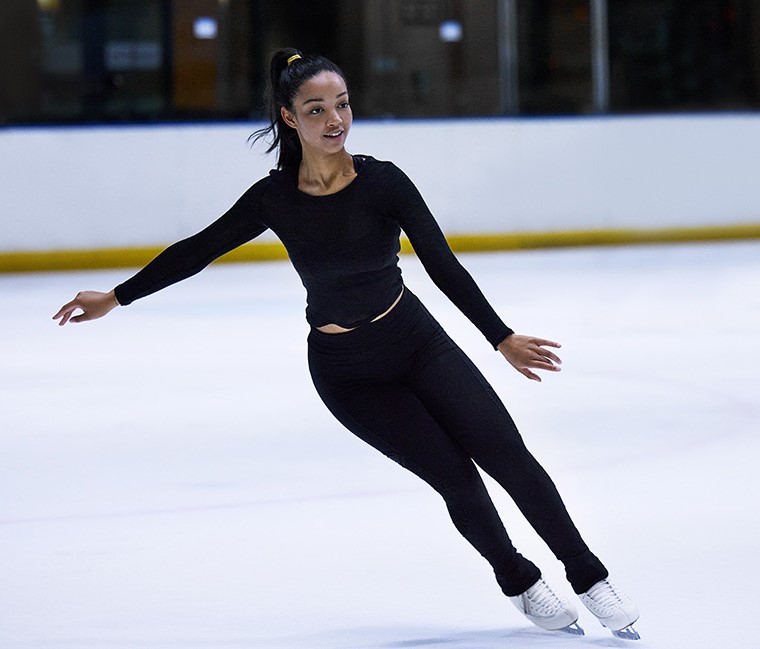At the HHS Office on Women’s Health, we are committed to empowering women and girls to be active in sports and stay healthy throughout life. There are many sports-related conditions that are more common in women compared to men, including stress fractures, anterior cruciate ligament (ACL) tears, ankle sprains, and recovery time after concussions. This blog shares the steps women and girls can take to prevent complications associated with the female athlete triad, a condition that can impact their ability to participate in the sports and activities that keep them active.
The female athlete triad is made up of three underlying conditions, including low energy availability (with or without disordered eating), menstrual dysfunction, and impaired bone health:

- Low energy availability means that there is less energy that is consumed from food than energy that is burnt from exercise. Low energy availability might be associated with disordered eating, such as restrictive eating, but women who develop the female athlete triad do not have to have an eating disorder to experience the impact of energy imbalance.
- Menstrual dysfunction can vary from delayed menarche (start of your first period), no menstrual cycle (period) for three months or more (amenorrhea), or irregular menstrual cycles (period). Menstrual dysfunction might impact a woman’s fertility.
- Impaired bone health means that you can have bone loss, weak bones, and bone stress injuries, such as stress fractures and other fractures.
Sports and activities that emphasize leanness (e.g., dancing, gymnastics, cheerleading, diving, running, and swimming) are often associated with the female athlete triad. The reality is that any woman or girl doing any sport or activity can develop the female athlete triad when the energy and nutrients from the food they eat does not match the energy they burn during exercise. The goal for women and girls who want to be active is to meet their energy needs based on how much they are exercising, have a regular menstrual cycle (period), and maintain strong bones so that they remain active throughout their lives. Balancing energy in and out of the body is important whether women and girls are playing sports or being active in grade school, high school, college, and beyond.
Many women and girls learn about the female athlete triad after they are sidelined with a stress fracture or another injury. Prevention is key when it comes to the female athlete triad. Here are the steps women and girls can take to prevent complications from the female athlete triad:
- Keep track of your menstrual cycle (period). Many women and girls start seeing patterns when they keep track of their exercise in relation to their menstrual cycle (period). The menstrual cycle (period) is a vital sign for women and girls, and an irregular period is a sign that you need to investigate further. If your menstrual cycle (period) is more than 35 days apart or if you start missing having your period, see your health care provider to look for underlying causes.
- If you notice that your energy output in the form of exercise exceeds your energy input in the form of food, re-evaluate your routine and consider talking with a nutritionist about how to balance your energy needs, especially if you are struggling with disordered eating. When the energy and nutrients from the food you eat does not match the energy you burn during exercise, you may feel like your energy levels are not where they should be, or you may notice that you are not performing at the level you have in the past. Your energy needs can change day to day depending on the level of exercise and whether you are growing in height.
- If you develop symptoms of a stress fracture, such as pain and swelling, talk with your doctor about the next steps for evaluation and treatment. The bottom line is to treat your bones with care. Bones do so much more than provide structural support for your body. Women gain most of their peak bone mass during their adolescent years and continue to gain bone density after adolescence with peak bone mass occurring at 25–35 years. This means that during years of significant athletic activity, you are building up your bone stores. The stronger your bones, the less risk you have for fracture. Your bones become strong when your energy stores are in balance, meaning your energy in (food) and energy out (exercise) are in balance.
Understanding the female athlete triad can help women and girls learn the best ways to optimize their health and improve their ability to recover from injuries that come up in sports and exercise.
Remember that, for the female athlete triad, prevention is easier than cure. We don’t want you to take time away from your sport because of injury and want you to be active throughout your life.

